Bright And Beautiful: The Types Of Macaws Living In The World Today
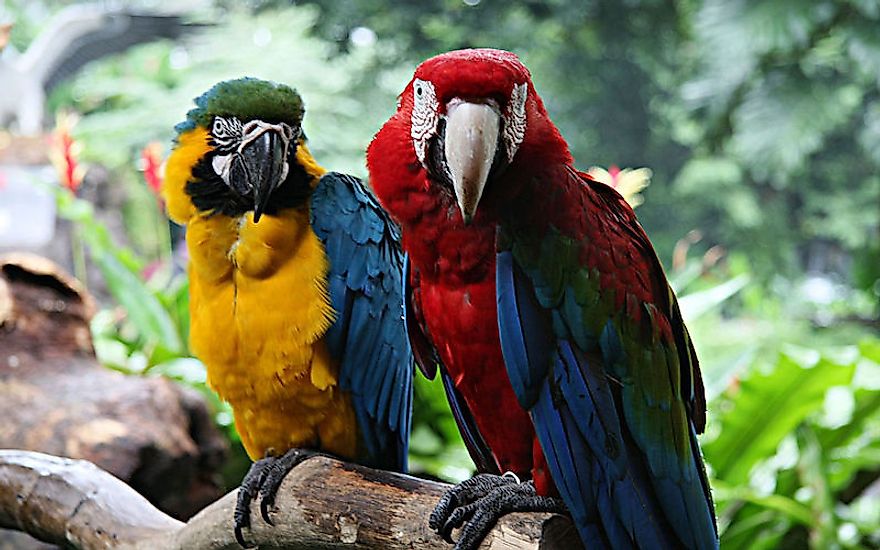
17. Red-Shouldered Macaw
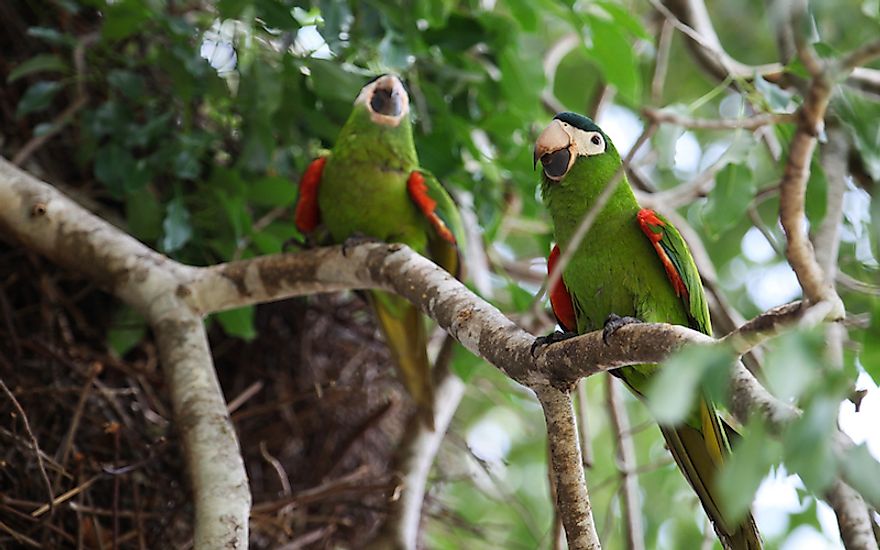
The red-shouldered macaw (Diopsittaca nobilis), named for the red wing coverts, lives in South America. It is the smallest species of macaw with a length ranging between 30 and 35 cm. The bird is native to the savannah, swamplands, and tropical lowland habitats within its range. The bird has two subspecies, the Hahn’s macaw and the noble macaw.
16. Yellow-Collared Macaw
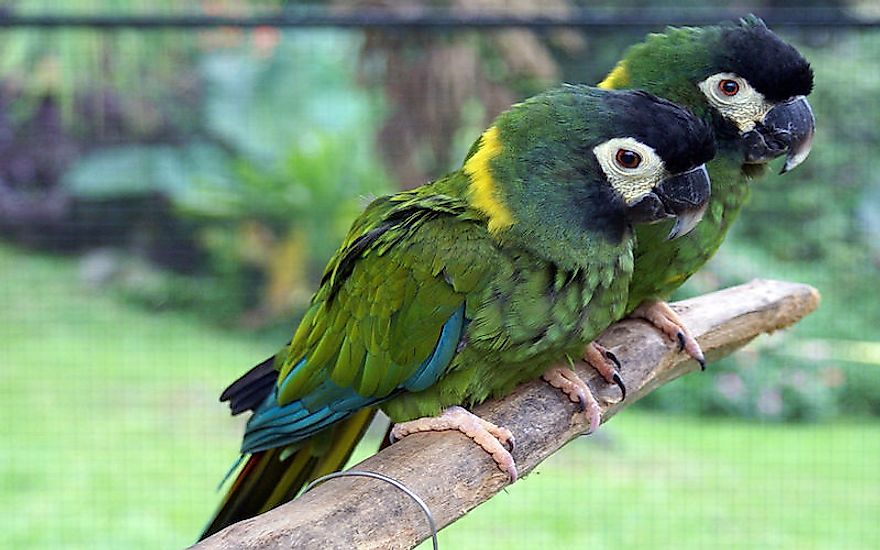
Also known as the yellow-collared macaw, the golden-collared macaw (Primolius auricollis) is a Central South American macaw that has a bright yellow patch at the back of its neck. This fact justifies the name of the bird. The main population of the yellow-collared macaw lives in the Pantanal of Brazil. The birds are mostly found in lowland habitats but in some location live at altitudes up to 5,600 feet. The macaws are not found in the Amazon Rainforest but inhabit other forests, savanna, woodlands, and grasslands.
15. Blue-Winged Macaw
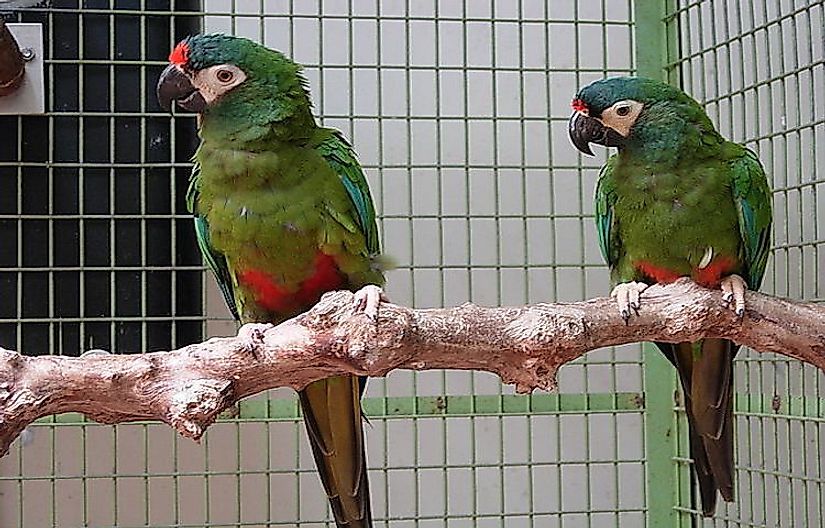
The blue-winged macaw (Primolius maracana) is also known as the Illiger's macaw. The species is found in eastern and central South America. These birds inhabit both evergreen and deciduous forests within its range. The birds are threatened by deforestation and cagebird trade and are classified as near threatened by the IUCN.
14. Blue-Headed Macaw
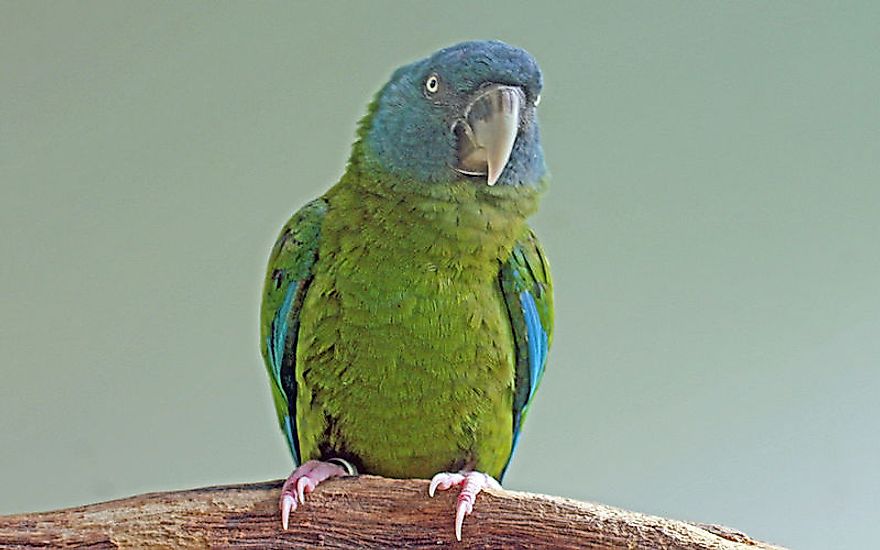
The Coulon's macaw or the blue-headed macaw (Primolius couloni) is a macaw species that is native to Peru, Bolivia, and far western Brazil. The bird is classified as vulnerable and is threatened by habitat loss and capture for the pet trade.
13. Red-Bellied Macaw
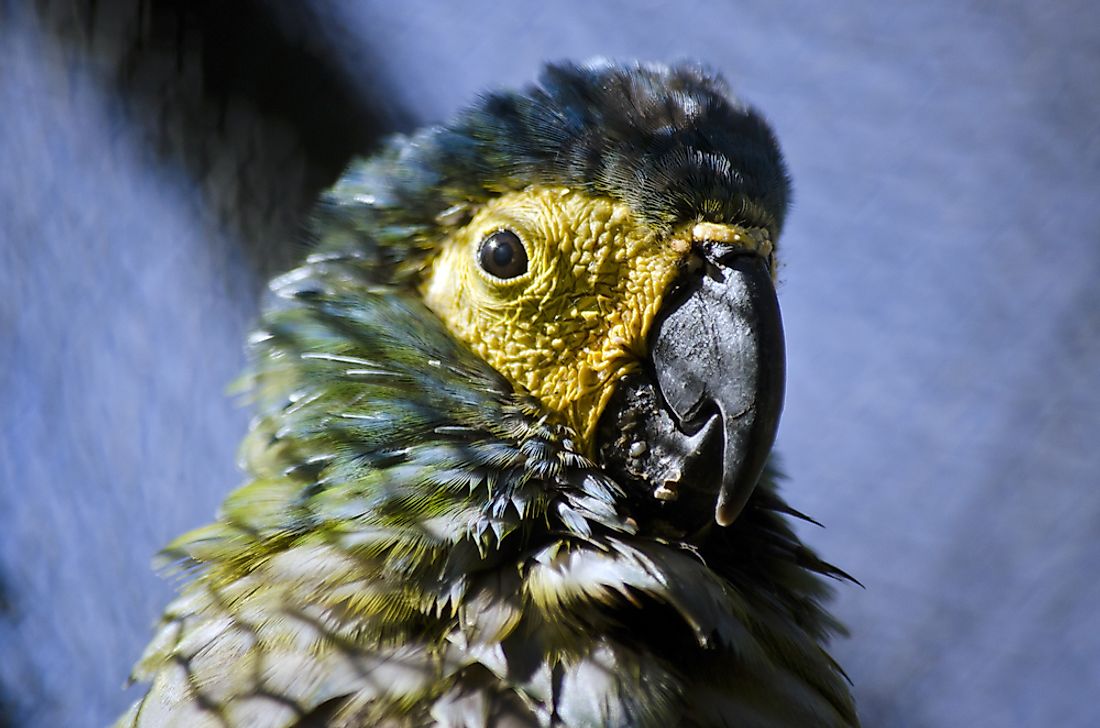
The red-bellied macaw (Orthopsittaca manilatus) is a medium-sized macaw living in South America. The belly of this bird has a large maroon patch and this is what led to the naming of the bird as the red-bellied macaw. The bird is endemic to the tropical Amazon forests of the continent. The range of the macaw includes Colombia, Trinidad, Peru, Bolivia, and Brazil. The bird inhabits the moriche palm swamp forests and the palm groves of savannahs within its range. The clearing of the palm vegetation for human uses and capture of the birds for the pet trade threatens the survival of thus bird.
12. Chestnut-Fronted Macaw
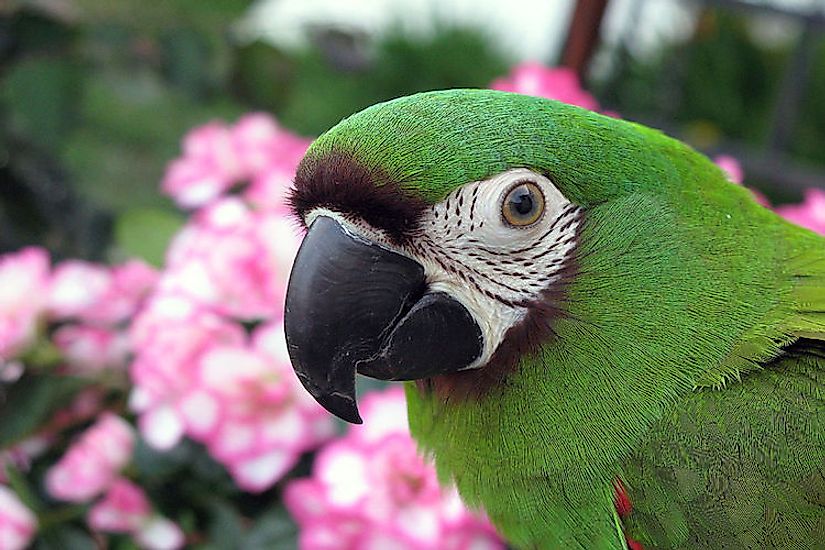
The severe macaw or the chestnut-fronted macaw (Ara severus) is a species of macaw that lives in northern South America where its range stretches from Panama to Amazonian Brazil to Bolivia. The birds have a long lifespan of 30 to 80 years of age. Although the macaw is mostly green-colored, it possesses a chestnut brown patch above its beak. Hence the name, chestnut-fronted macaw.
11. Red-Fronted Macaw
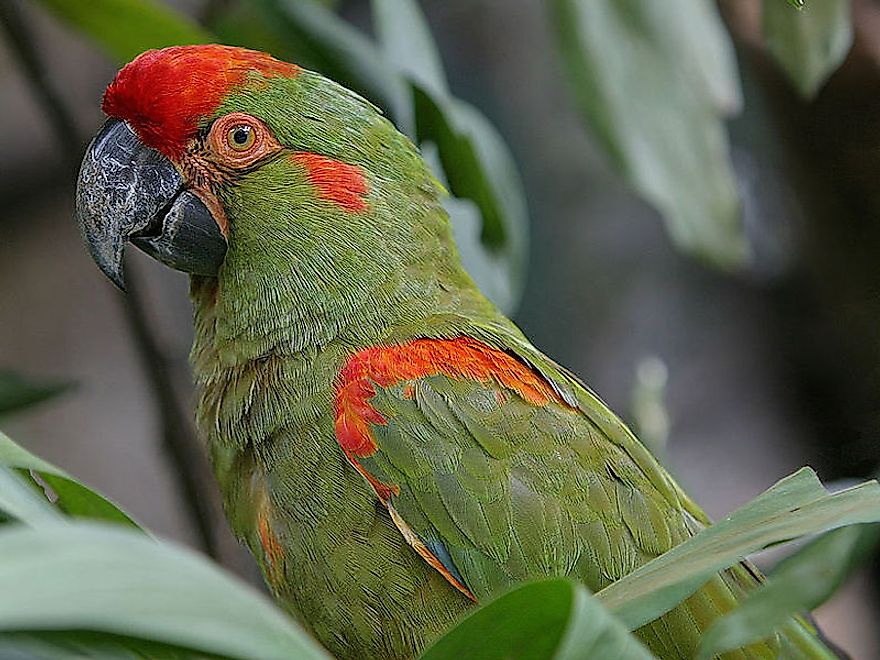
The red-fronted macaw (Ara rubrogenys) is a macaw species that is endemic to Bolivia’s mountainous areas. The species is classified as endangered and is bred in captivity to ensure the survival of the species.
10. Green-Winged Macaw
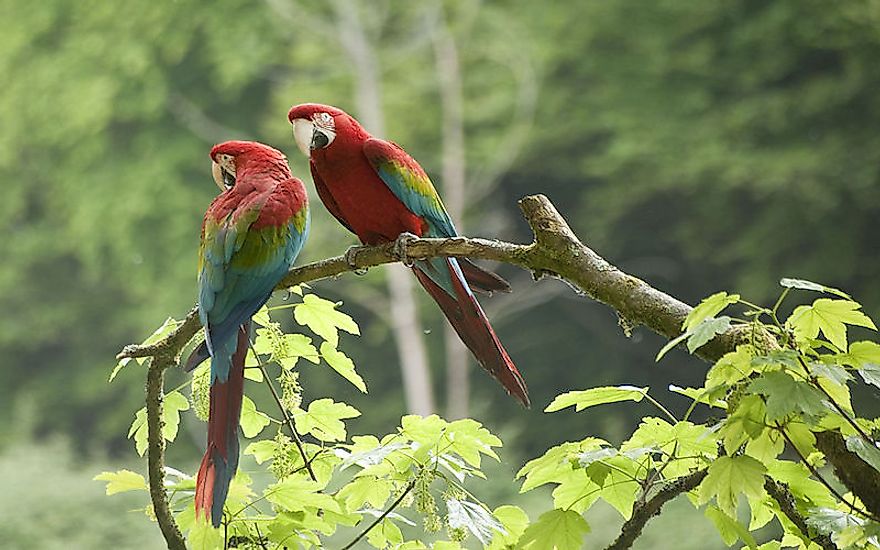
The green-winged macaw or the red-and-green macaw (Ara chloropterus), is another vibrant species of macaw featuring bright red plumage. These birds inhabit the forests and woodlands of South America’s central and northern parts. Although still widespread in distribution, the species is subjected to the same common threats as others of its kind.
9. Scarlet Macaw
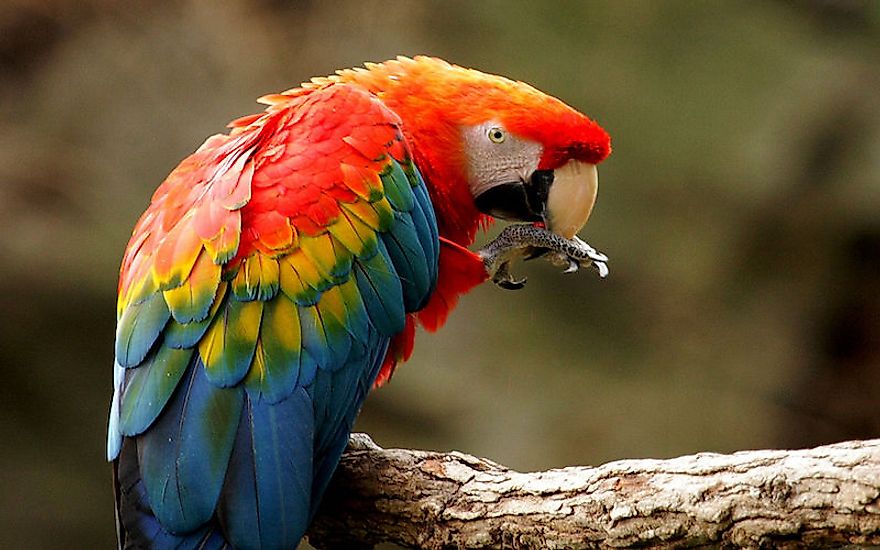
The scarlet macaw (Ara macao) is a large bird with brilliant plumage featuring red, yellow, and blue colored feathers. The macaw is native to tropical South America’s humid evergreen forests. Although still regarded as a species of least concern from the conservation point of view, some local populations of this bird have dwindled due to habitat loss and illegal capture for the pet trade.
8. Great Green Macaw
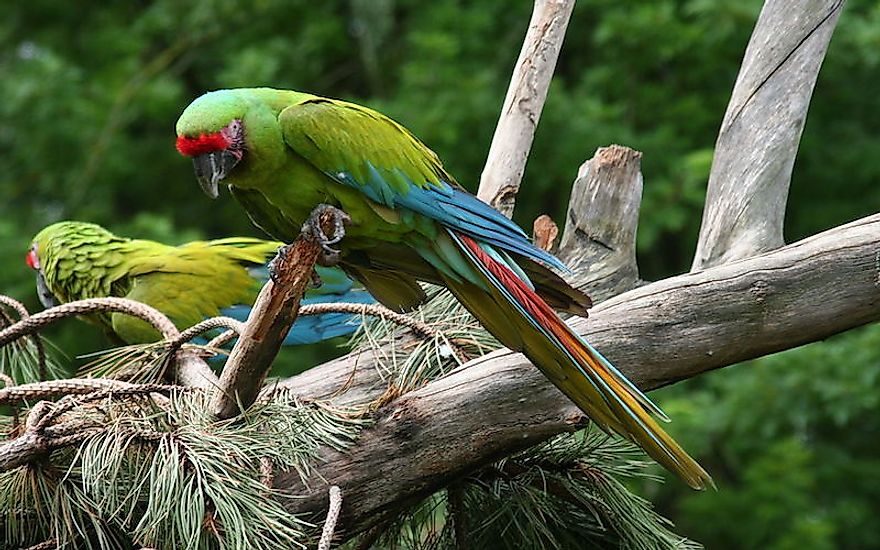
The great green macaw or the Buffon’s macaw (Ara ambiguus) is a species of macaw living in Central and South America. Within its range, the bird inhabits the canopy of wet tropical forests where it is highly dependent of the almendro tree. Habitat loss due to the harvesting of the almendro tree for wood and replacement of forest land by agricultural land threaten the populations of the great green macaw. The bird is thus classified as endangered.
7. Military Macaw
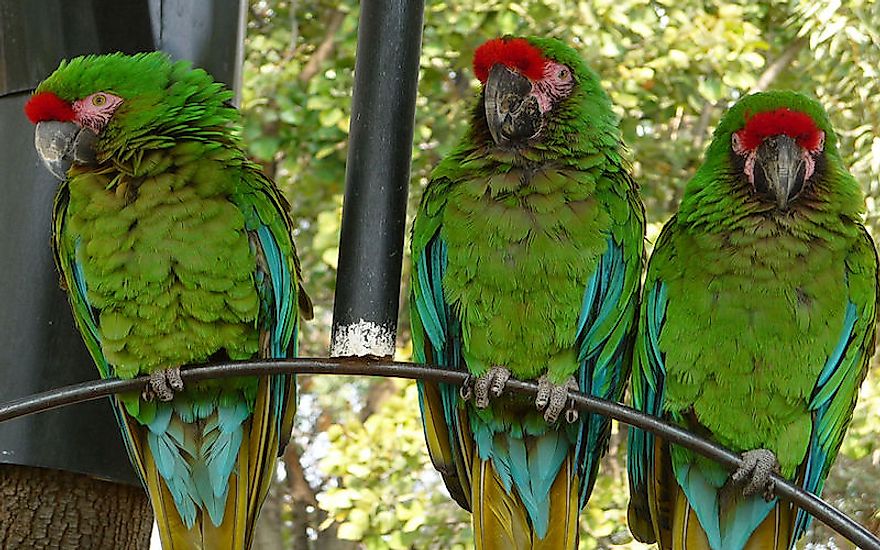
The military macaw (Ara militaris) is a medium-sized macaw species that lives in the forests of Mexico and South America. The predominantly green plumage of the bird reminds one of a military parade uniform, hence the name. The military macaw is currently classified as vulnerable due to the capture of a large number of these birds to satisfy the high demands of the pet trade industry.
6. Blue-Throated Macaw
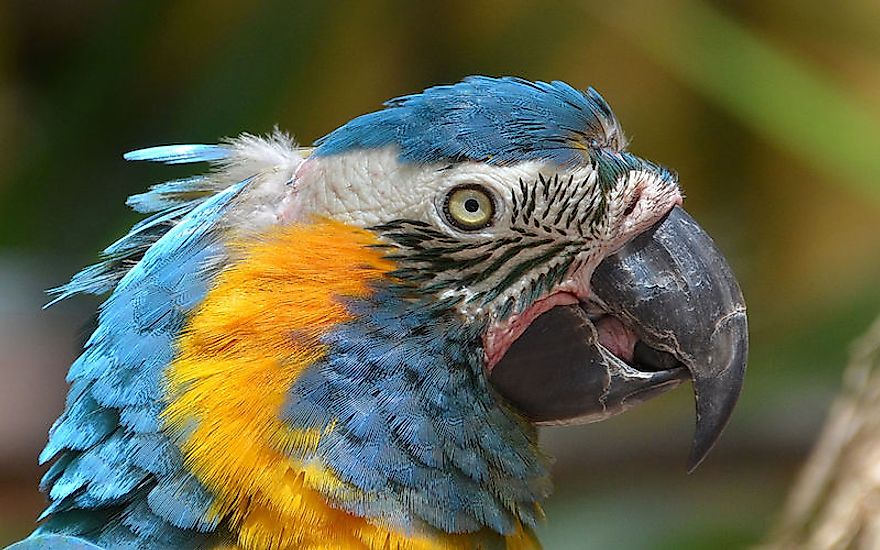
The blue-throated macaw (Ara glaucogularis) is a species of macaw that is endemic to Los Llanos de Moxos, a small area in north-central Bolivia. Due to the highly restricted range of this species and a small population of a few hundred individuals, it is currently designated as critically endangered. The illegal pet trade is considered to be the main culprit behind the demise of this species. The blue-throated macaw is regarded as one of Bolivia’s cultural heritage.
5. Blue-and-Yellow Macaw -
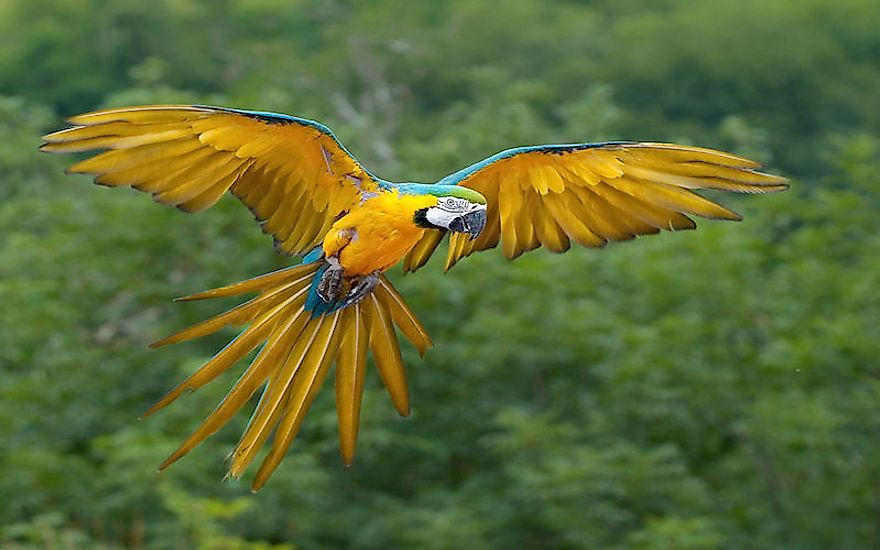
The blue-and-yellow macaw (Ara ararauna) is a vibrant bird with blue top parts and yellow underparts. The birds can be observed in the forests and woodlands of tropical South America. The birds are extremely popular among tourists and bird-lovers due to their striking color, talking abilities, and close bonding to humans.
4. Spix’s Macaw
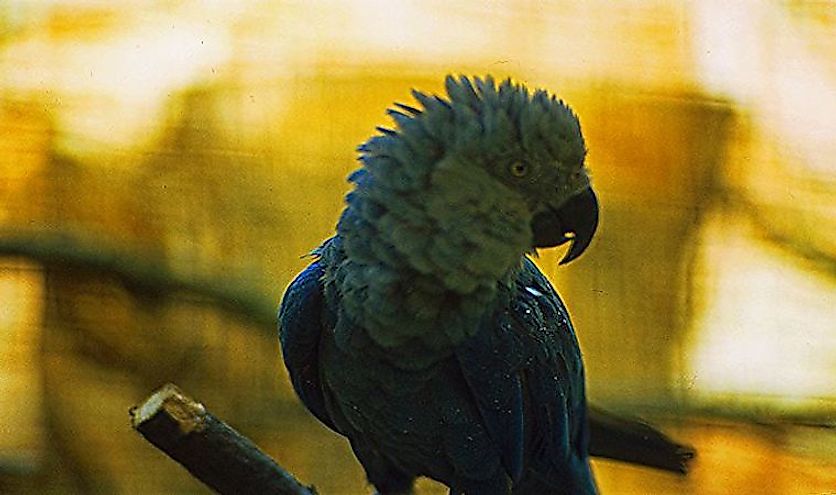
The Spix’s macaw also called the little blue macaw (Cyanopsitta spixii), is a native bird of Brazil. The bird is medium-sized and weighs about 300 gms. The plumage of this bird exhibits various shades of blue. The species had a highly restricted range due to its heavy dependency on the seeds and nuts of the Caraiba tree and similar flora in the Caatinga dry forest climate of Brazil. Due to destruction and degradation of habitat, the Spix’s macaw experienced a massive decline in population. Today, these birds are classified as critically endangered by the IUCN while some experts believe they are already extinct in the wild.
3. Lear's Macaw
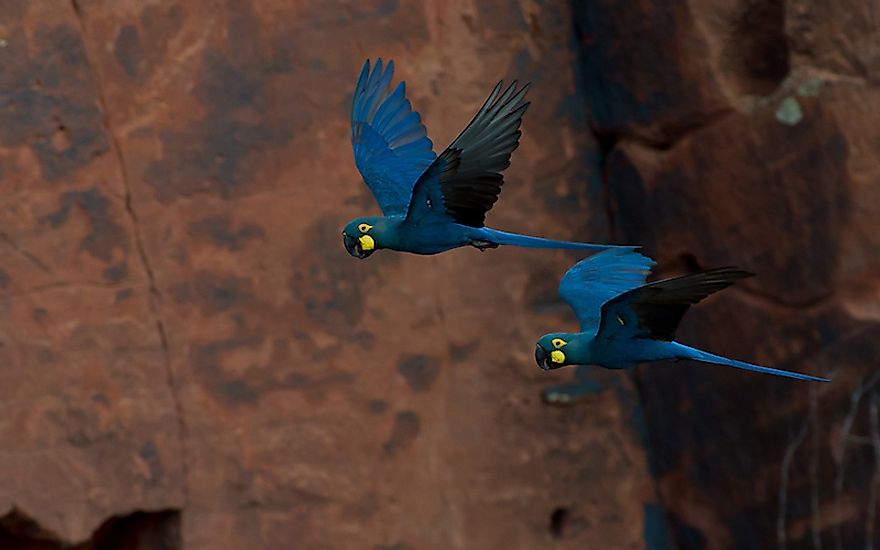
The Lear's macaw (Anodorhynchus leari) is a large all-blue parrot living in Brazil. The bird is about 75 cm long and weighs around 950 g. The Lear’s macaw has a highly restricted range confined to parts of northeast Brazil’s interior regions. Here, the bird inhabits stands of licuri palm. Due to its restricted range and highly restricted habitat, the Lear’s macaw is an endangered species of bird.
2. Hyacinth Macaw
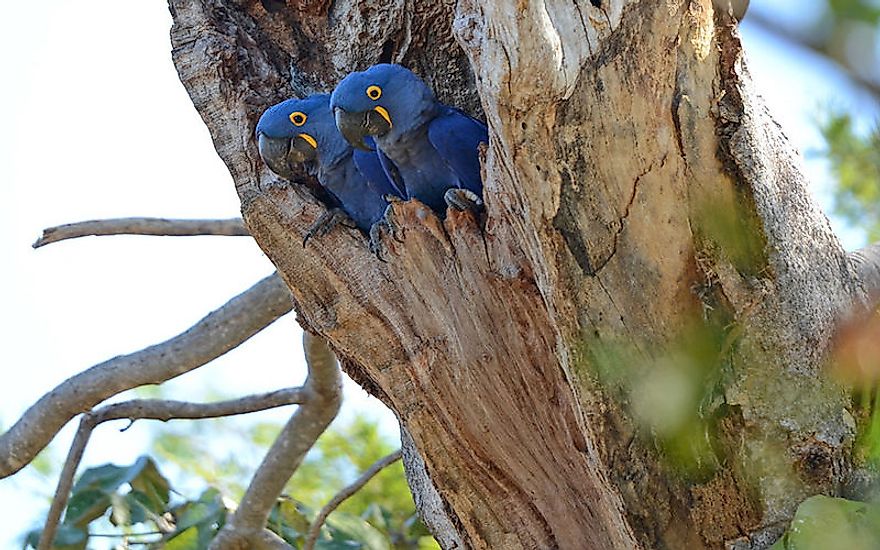
The hyacinth macaw (Anodorhynchus hyacinthinus) is a vulnerable macaw species that inhabits eastern and central South America. It is the longest among all species of parrots with a length of about 3.3 feet from the head to the tip of the tail. It is also the heaviest among all species of flying parrots. The flightless kakapo is heavier than the hyacinth macaw. Trapping of wild birds for the pet trade and habitat loss threaten the survival of these birds today.
1. Glaucous Macaw
The glaucous macaw (Anodorhynchus glaucus) is a critically endangered species of South American parrot that is generally believed to be extinct. The bird was native to parts of Paraguay, Argentina, and Bolivia. Rumors of sightings of this bird in the wild have kept its status at Critically Endangered instead of Extinct.







